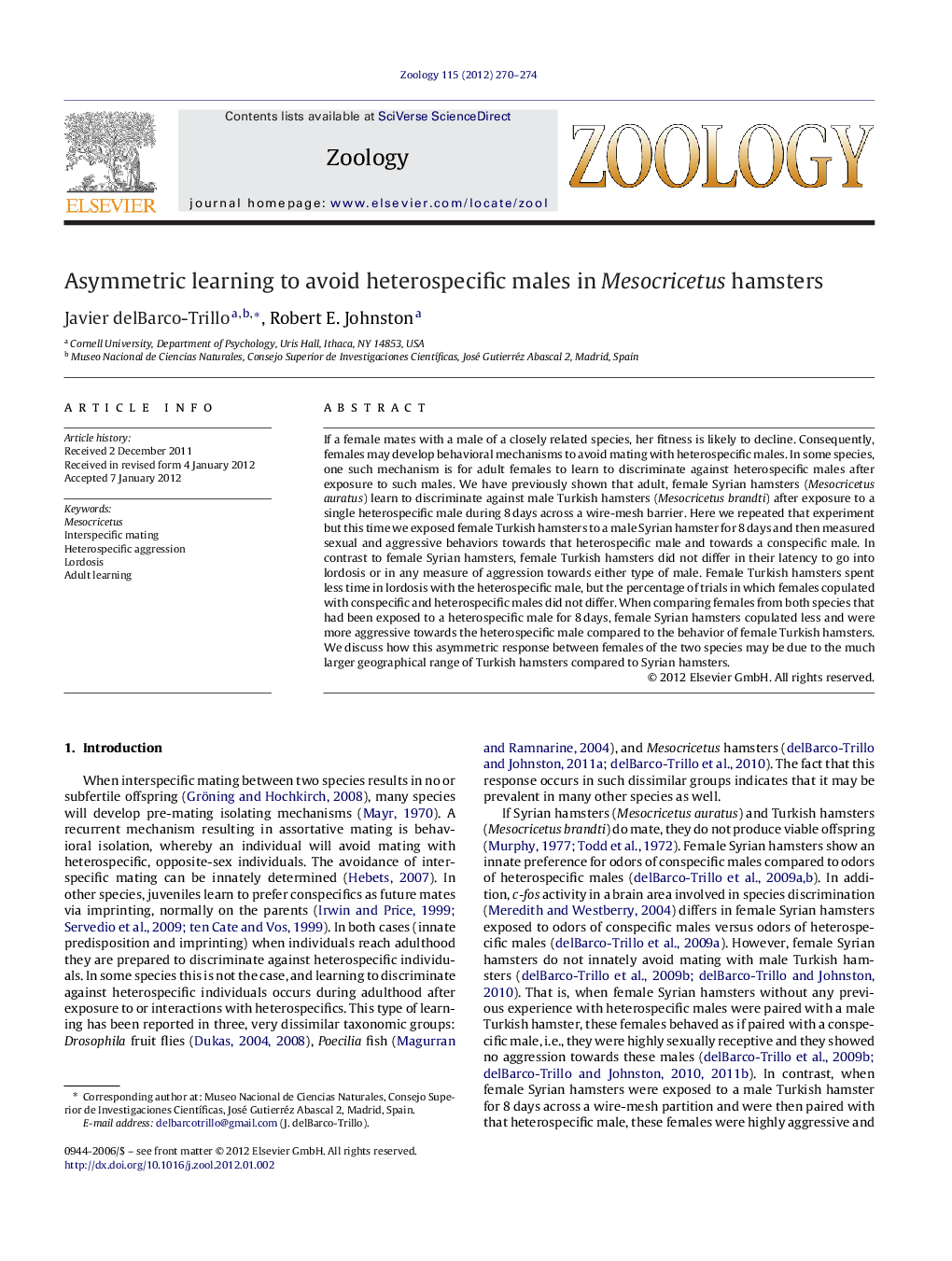| Article ID | Journal | Published Year | Pages | File Type |
|---|---|---|---|---|
| 2791182 | Zoology | 2012 | 5 Pages |
Abstract
If a female mates with a male of a closely related species, her fitness is likely to decline. Consequently, females may develop behavioral mechanisms to avoid mating with heterospecific males. In some species, one such mechanism is for adult females to learn to discriminate against heterospecific males after exposure to such males. We have previously shown that adult, female Syrian hamsters (Mesocricetus auratus) learn to discriminate against male Turkish hamsters (Mesocricetus brandti) after exposure to a single heterospecific male during 8Â days across a wire-mesh barrier. Here we repeated that experiment but this time we exposed female Turkish hamsters to a male Syrian hamster for 8Â days and then measured sexual and aggressive behaviors towards that heterospecific male and towards a conspecific male. In contrast to female Syrian hamsters, female Turkish hamsters did not differ in their latency to go into lordosis or in any measure of aggression towards either type of male. Female Turkish hamsters spent less time in lordosis with the heterospecific male, but the percentage of trials in which females copulated with conspecific and heterospecific males did not differ. When comparing females from both species that had been exposed to a heterospecific male for 8Â days, female Syrian hamsters copulated less and were more aggressive towards the heterospecific male compared to the behavior of female Turkish hamsters. We discuss how this asymmetric response between females of the two species may be due to the much larger geographical range of Turkish hamsters compared to Syrian hamsters.
Keywords
Related Topics
Life Sciences
Agricultural and Biological Sciences
Animal Science and Zoology
Authors
Javier delBarco-Trillo, Robert E. Johnston,
